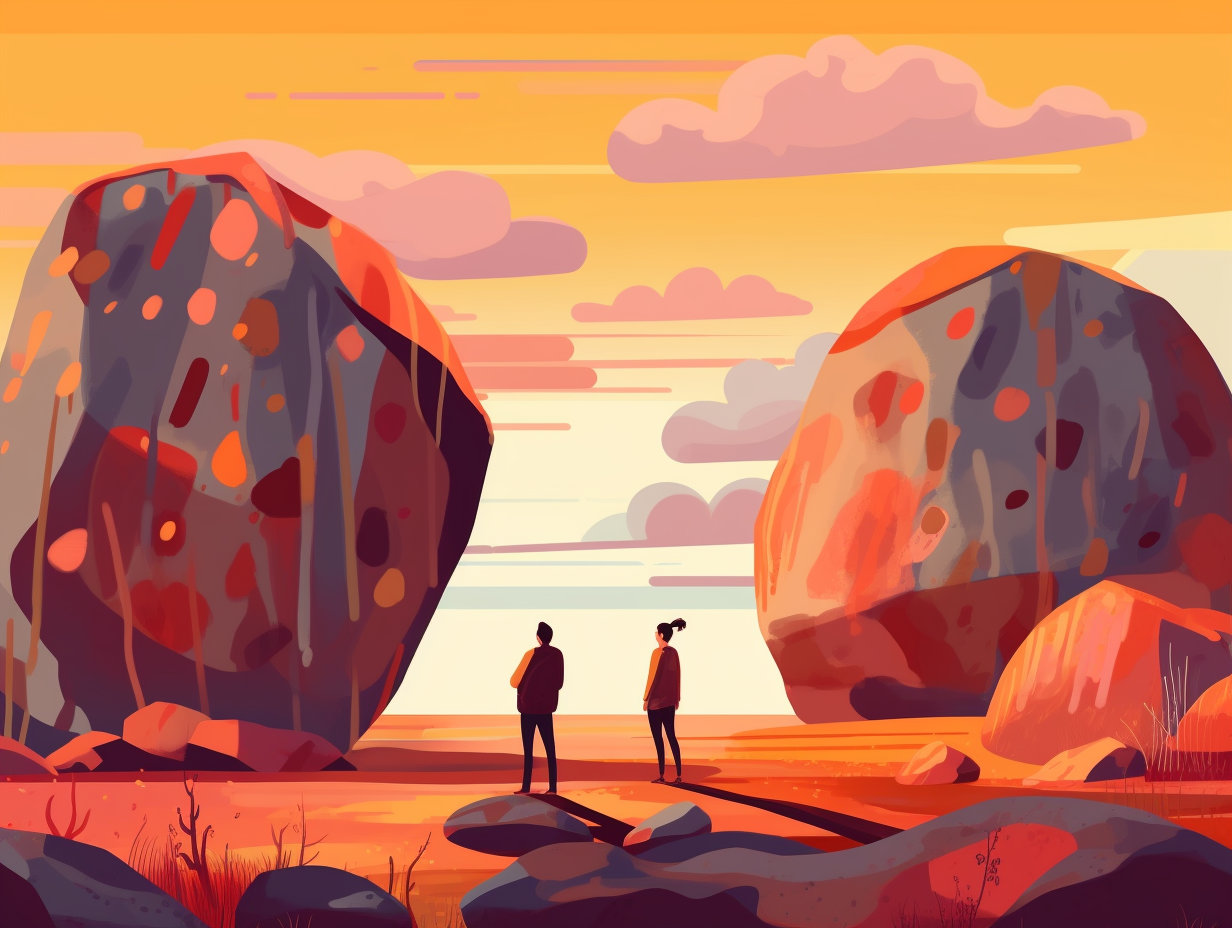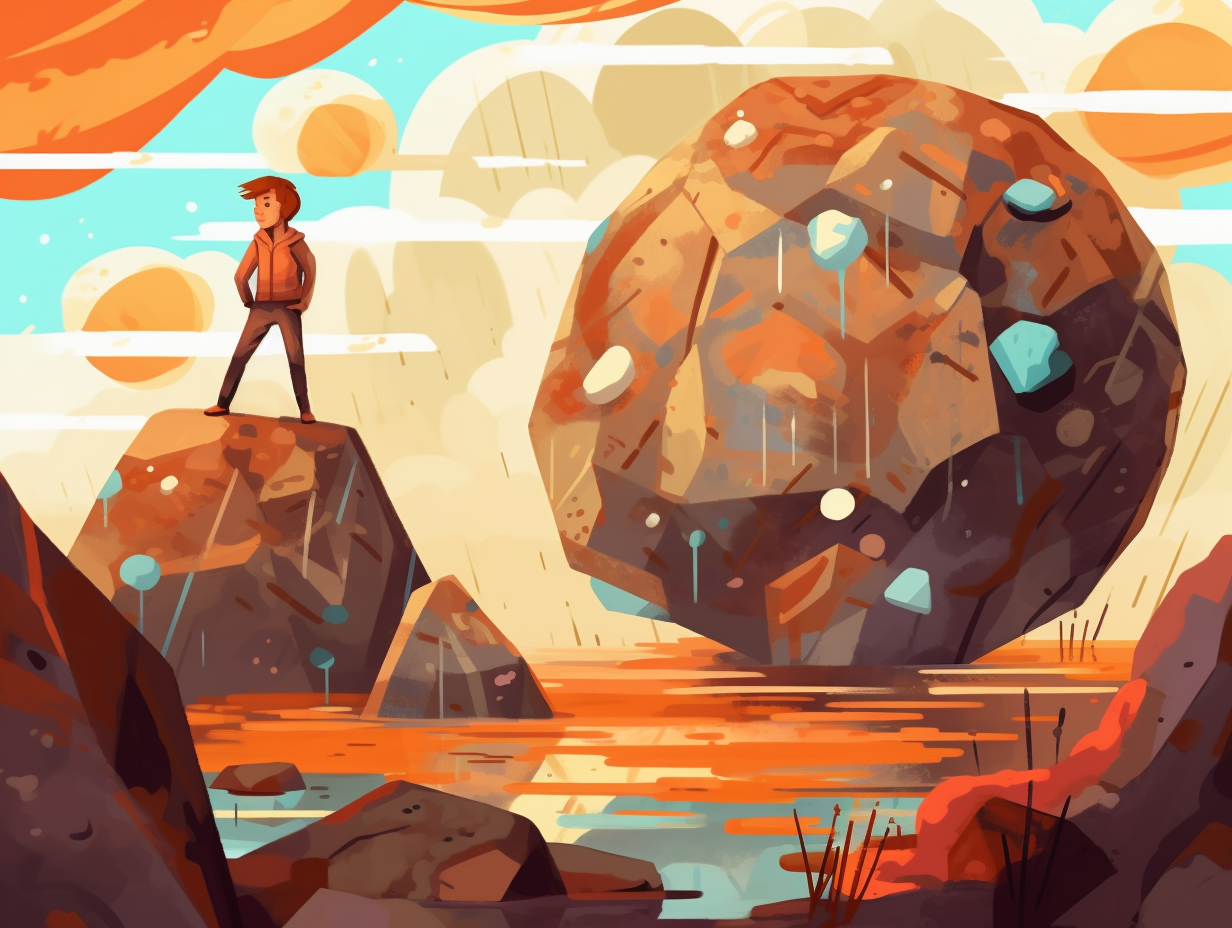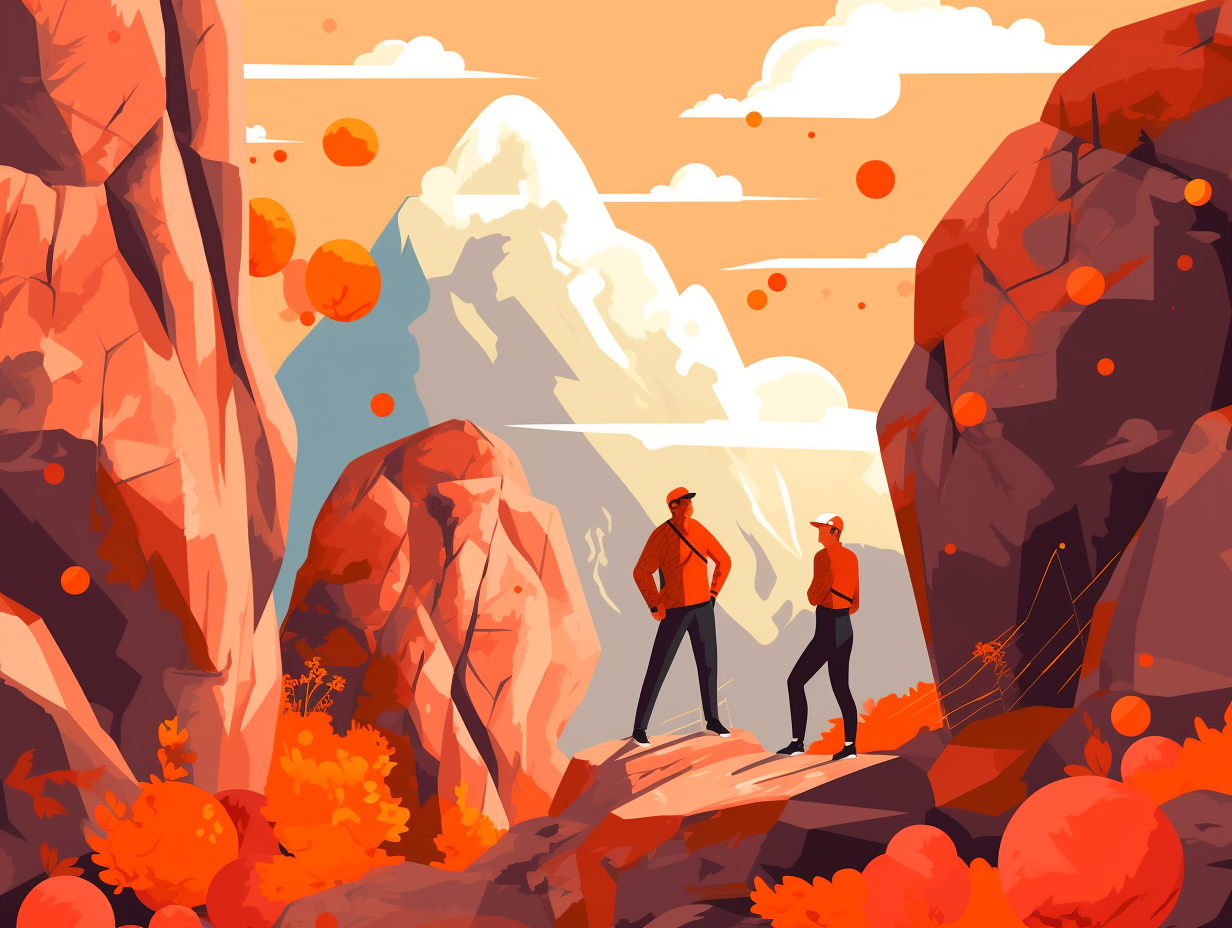Rock On: 14 Amazing Fun Facts About Rocks You Never Knew!

1. Basaltic Rocks: CO2 Warriors
In the timeless battle between carbon dioxide and rock, it seems that the rocks have finally cooked up a secret weapon: Basaltic rocks can actually turn CO2 into solid minerals, allowing for permanent greenhouse gas storage. This process, tested in Iceland with a 90% success rate within two years, could revolutionize carbon capture and storage methods and even be adapted for areas with limited freshwater resources.
Source => eos.org
2. Road Salt: Snow's Salty Nemesis
Who needs to travel to the Dead Sea for that signature salty experience when you can just drive on your local winter streets? That's right, folks, our very own road salt corrosion vacation: Road salt, with its large-crystal texture, is commonly used in many states to melt ice and snow on roads by lowering water's freezing point. This staple snow-fighter, however, can harm vehicles, infrastructure, and even seep into water bodies, causing environmental pollution. So, researchers are working on alternatives like "anti-icing" roads with brine to keep our wintery ways both safe and salty-lover friendly.
Source => bridgestonetire.com

Did you know that minerals like fluorite, calcite, and opal can put on a dazzling light show under UV light? It all depends on the specific impurities within their atomic structure. Discover more about these rock stars and their dancefloor moves!
=> Fun Facts about Minerals
3. Painite: Cinderella of Gemstones
If Cinderella were a gemstone, she'd be Painite: a rare beauty found only in Myanmar, struggling to shine brightly through her flaws. But with the help of expert gem cutters as fairy godfathers, this elusive stone transforms into a deep red stunner: Painite, discovered in 1957, has a hardness of 8 and boasts an attractive brilliance, yet it's scarce facetable material due to having high inclusions and fractures.
Source => gemsociety.org
4. Desert Varnish: Bacteria's Slow Cooker Recipe
Behold the wonders of ancient bacteria's slow cooker recipe for rock dressing: Desert varnish is a coating created by microscopic bacteria colonies that spend thousands of years absorbing manganese and iron from the atmosphere to garnish sun-baked boulders with manganese oxide or iron oxide, taking around 10,000 years to perfect in the arid climates of the southwestern United States.
Source => abdnha.org

5. Ringing Rocks: Earth's Musical Marvels
If the hills have eyes, some rocks have vocal cords too: In Ringing Rocks Park in Pennsylvania and Ringing Rocks Pluton in Montana, certain sonorous rocks, bestowed the power to resonate like a metal band's dream, sing when struck with a hammer – all thanks to their unique composition and erosion over time. The secrets to their melodic prowess, however, remain an enigma to science.
Source => earthlymission.com
6. Grass vs. Trees: Soil's Secret Story
If soil could talk, it would have quite the "grass-roots" movement on its hands: The type of vegetation growing on land – specifically, whether it's trees or grasses – directly impacts soil formation, with grasslands producing soil richer in organic matter and more crop-friendly. Who knew terra firma had a deeper backstory impacted by climate, topography, and time?
Source => passel2.unl.edu
7. Valcamonica: Prehistoric Graffiti Central
If Jurassic Park had an artsy cousin who majored in prehistoric graffiti and minored in good ole rock(et) science, it'd be Valcamonica in Lombardy, Italy: With a staggering 140,000-plus petroglyphs dating back over 8,000 years, this rockin' gallery displays agriculture, deer hunting, duels, and enigmatic geometric symbols, giving us a front row seat to the mindblowing worldviews of our ancient ancestors.
Source => whc.unesco.org
8. Pillow Lava: Underwater Volcanic Cushions
When life gives you lava, make volcanic pillows: Pillow lava, also known as pillow basalts, is uniquely formed during underwater volcanic eruptions and gets its plush appearance from the reaction between molten lava and cool seawater, resulting in a glassy, puffed-up texture typically found on the ocean floor and other subaqueous environments.
Source => nps.gov
9. Rivers and Glaciers: Earth's Crust Recyclers
Move over, Uber Eats—nature has its own delivery service: rivers and glaciers! These earth-shaping wonder workers act like MVPs in recycling the Earth's crust, transporting sedimentary materials from land to ocean. They efficiently erode the surface, remove weathered material, and expose new bedrock—all while making sure they don't leave a single nutrient behind. Nature's got this relocation game on lock: They continually weather the earth's surface simply by carrying out their watery duties.
Source => g105lab.sitehost.iu.edu

10. Rock Fashion Show: Geological Runway Rumble
Once upon a time in a geology tale far, far away, there was a rock fashion show where stony supermodels strutted their stuff, flaunting diverse colors, dazzling patterns, and various shapes – you might say they were the epitome of "rockin' the runway": This amusing variety in the world of rocks is due to different minerals, materials, and formation processes such as volcanic activity, erosion, and cooling magma – by studying these diverse rock styles, scientists can uncover the fascinating history and geology of our very own planet.
Source => flexbooks.ck12.org
11. Metamorphic Makeovers: Gneiss and Marble Edition
Rocks aren't the only thing getting a makeover these days: even these hard-headed natural beauties like gneiss and marble have jumped onto the metamorphosis bandwagon! The shocking truth: gneiss was once granite, and marble was once limestone, with the transformation occurring under intense heat, pressure, and mineral-rich fluids deep within the Earth's crust or at plate boundaries. Once exposed to the surface, they shed their old layers (we're looking at you, metamorphic rocks) to eventually become sedimentary rocks, giving a whole new meaning to the phrase "you rock my world!"
Source => education.nationalgeographic.org
12. Jadarite: Superman's Surprise
You don't need to own a cape or sport tights to feel a little closer to Superman, just get your hands on a rock that bears a striking resemblance to his notorious Achilles heel: In a bizarre twist of fate, the chemical formula of a real mineral found in Jadar, Serbia, is a perfect match for the fictional Kryptonite from comic books and movies! Alas, this mineral, named Jadarite, does not possess the famous green glow and won't send the Man of Steel fleeing; it's actually a harmless white substance that glimmers pinkish-orange under ultraviolet light.
Source => livescience.com
13. Limestone vs. Sandstone: Rock Layer Race
Feeling a little sedimental, are we? Strap in for a wild ride through the rock layer express: that dainty limestone layer might have taken its sweet geological time to form compared to its thick and hasty sandstone cousin, having more to do with their deposition agents' transporting ability than the actual time spent forming.
Source => vedantu.com
14. Sinkholes: Florida's Swiss Cheese Earth
You know what Florida and Swiss cheese have in common? They both tend to have a few holes! It's not a cheesy joke, it's a geological wonder: Sinkholes are formed in Florida's limestone terrain as rainwater and decaying vegetation create slightly acidic water that dissolves limestone over thousands of years, resulting in voids underground. These sinkholes can be anywhere from 10 to hundreds of feet in diameter and are triggered by natural processes or human activities like over-pumping groundwater and drilling new water wells.
Source => sjrwmd.com
Related Fun Facts




















